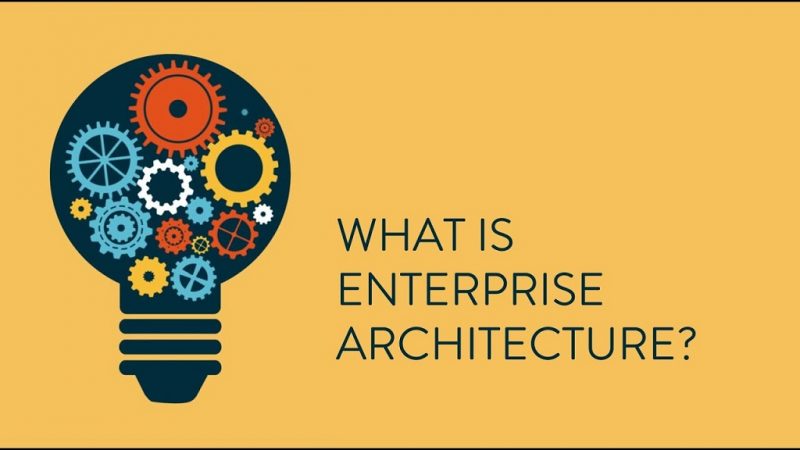To capture the enterprise system’s complete vision in all its dimensions and complexity, the concept of enterprise architecture arises. Identify the main components of the organization and their relationship to achieve business objectives. It acts as an integrating force between business planning aspects, business operation aspects, and technological aspects.
The enterprise architecture is very important because a business is a complex entity composed of people, processes, and technology that produce products or services designed to meet customers’ needs.
What is enterprise architecture?
The business architecture in an organization corresponds to integrally representing the company, allowing it to cover and consider every element that makes it up. This leads to a clear vision of the objectives, goals, and business lines in the company being established, starting from the strategic perspective (mission, vision, guidelines, and strategic indicators). Until reaching a current and future structure for the organization processes; which incorporates some of the components that are considered critical for its operation:
- The processes: business models and processes.
- The organizational structure: people, administrative systems.
- The information technology: applications, information technology infrastructure, and security.
As a final result, the necessary tools and mechanisms will be available for the company’s such as ValueBlue proper operation and functioning, and therefore, support the fulfillment of its strategic objectives.
Basic elements of enterprise architecture
Talking about business architecture can not only be something ambitious but also abstract.
- Business architecture: Fundamental elements of the business strategy, vision, objectives, etc. Some of the elements usually described in this component are:
- Business capabilities
- Business component structure
- Business processes and value streams
- Conceptual business model
- Information architecture: Information elements accompanied by metadata and with a conceptual and logical description. Some elements are:
- Information models
- Service Models
- Transactional data flow
- Persistent / transient metadata
- Solution architecture: Introduces the specific considerations of the different platforms and supporting components. Elements:
- Reference architecture
- Platform-specific design optimization
- Portfolio management solution
- Technological capacity
- Application architecture: Provides design specifications to generate a specific instance of a solution based on a specific project or version. It uses artifacts such as sequence diagrams, XML specifications, requirements traceability matrices, etc. to describe aspects such as:
- Implementation and tools
- Solution deployment
- Software configuration management
- Intellectual property asset management
- Platform architecture: Focuses on the physical deployment of the solution providing data such as data center location, device and server addresses, and operating system versions and patch level, etc. It therefore includes:
- Deployment of strategic infrastructure
- Performance monitoring/capacity planning
- Horizontal and vertical scalability
- Physical asset management
- Business operations continuity
What is the Enterprise Architecture Repository?
Enterprise architecture repository
This then brings us to one of the critical points of Enterprise Architecture: to truly do enterprise architecture, all these ways of representing the enterprise must be put in one place so that they can ‘talk’ to each other. We will call that place the architecture repository.
An architecture repository is nothing more than a warehouse, where we place the different models (the simplified representation). Each model in our warehouse represents a particular aspect. It will have a given point of view. That is, it is looking at a specific dimension of the problem. For the Enterprise Architecture to be of value, it must allow me to see how the different dimensions are related. For example, given the company’s specific objective, how it affects a particular position, or how it affects a specific process or specific software. Let’s graph this with an example. The company’s long-term objective may be to open a second branch, which affects the accounting system we have, which is not designed for a multi-branch company. One of the things that enterprise architecture seeks is to align the company’s different aspects with its objectives.
Enterprise Architecture Matrix
Now, all this leads us to whether we have various points of view. What are these points of view? The truth is that there are many, but we simplify them by placing them in the matrix that we see below. On the one hand, we have a hierarchy that goes from the strategic level to the operational and technological levels. On the other hand, we see different perspectives of the company: Motivation, Structure, and Functioning. In each of these cells, there are specific models to represent that perspective with a given level.
So looking at the different cells of the matrix, we can see things like the following:
- The junction with Data Strategy should go the balanced scorecard or balanced scorecard that tells us how about us.
- The business process map should go at the intersection of Processes and Behavior.
- At the intersection of Technology with Motivation, models contain all the requirements that we are asking from the software.
- Among many other models that we can have.
